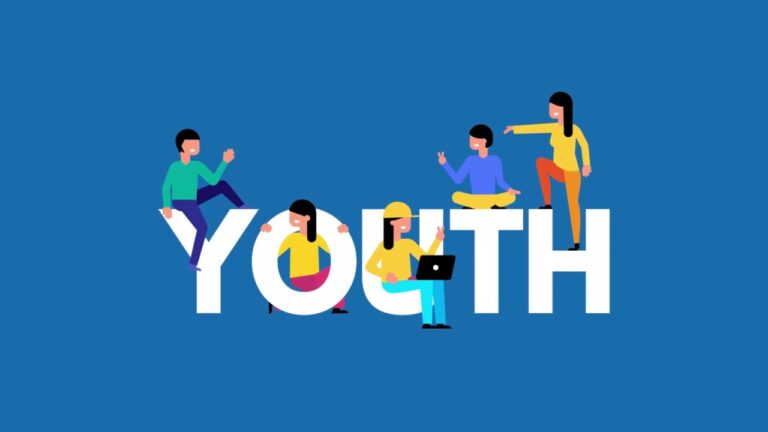In a rapidly evolving world, investing in youth development is not merely a social responsibility; it’s a strategic imperative for building resilient communities, fostering innovation, and securing a prosperous future. From nurturing raw talent in sports and arts to equipping young minds with critical academic and life skills, a focused approach to youth development unlocks human potential on an unparalleled scale. It’s about providing the right environments, resources, and mentorship to empower the next generation to not only overcome challenges but to thrive, innovate, and lead. This comprehensive article delves into the multifaceted dimensions of effective youth development, exploring the pivotal role of education, the transformative power of mentorship, the integration of technology, the importance of holistic well-being, and the profound societal impact of empowering young people to reach their fullest capabilities. We’ll unveil why a robust investment in youth is the ultimate blueprint for a dynamic and flourishing future.
Education and Skill Acquisition

At the core of any successful youth development strategy lies a commitment to holistic education and the acquisition of diverse, future-relevant skills. This extends far beyond traditional classroom learning.
Pillars of Educational Youth Development:
- Access to Quality Formal Education: Ensuring equitable access to high-quality primary, secondary, and tertiary education is fundamental. This includes well-resourced schools, qualified teachers, relevant curricula, and environments conducive to learning. It’s about building a strong academic foundation in literacy, numeracy, and critical thinking.
- Early Childhood Development (ECD): Investing in the earliest years of a child’s life is paramount. ECD programs focus on cognitive, social, emotional, and physical development from birth to age eight, laying crucial neural pathways and foundational skills that impact lifelong learning and well-being. Quality preschools and stimulating home environments are key.
- STEM Education (Science, Technology, Engineering, Math): In an increasingly digital and innovation-driven world, strong emphasis on STEM education prepares youth for future careers and equips them with problem-solving and analytical skills crucial for global competitiveness. Hands-on learning, coding clubs, and robotics competitions foster interest and aptitude.
- Vocational and Technical Training: Not all paths lead to university. Providing robust vocational and technical training programs equips young people with practical, marketable skills for specific trades and industries, addressing labor market demands and offering alternative pathways to economic empowerment. Apprenticeships play a vital role here.
- Digital Literacy and Cybersecurity: In the digital age, being able to navigate online environments safely, critically evaluate information, understand cybersecurity risks, and utilize digital tools effectively is no longer optional; it’s a fundamental life skill for all youth.
- Soft Skills Development (21st Century Skills): Beyond technical knowledge, youth need soft skills crucial for success in any field. This includes critical thinking, problem-solving, communication, collaboration, creativity, adaptability, and emotional intelligence. These skills are often best learned through project-based learning, group activities, and experiential education.
- Financial Literacy: Equipping young people with the knowledge and skills to manage money effectively, understand budgeting, saving, investing, and credit, fosters financial independence and reduces vulnerability to economic hardship in adulthood.
Mentorship and Role Models
Beyond formal education, the presence of positive adult figures and inspiring role models is a transformative force in youth development, providing guidance, support, and aspirations.
Crucial Aspects of Mentorship and Role Modeling:
- Formal Mentorship Programs: Structured programs connect young people with experienced adults who provide guidance, share life lessons, offer career advice, and act as sounding boards. These relationships offer consistent, personalized support.
- Informal Mentorship: Often occurring naturally, informal mentors (e.g., coaches, teachers, community leaders, family members) can provide invaluable advice, encouragement, and a safe space for young people to explore their identities and aspirations.
- Peer Mentorship: Older youth mentoring younger ones can be highly effective, as peers often share similar experiences and build trust more readily. This also empowers the older youth with leadership skills and responsibility.
- Positive Role Models: Exposure to diverse and successful role models from various fields (sports, arts, science, business) broadens young people’s horizons, inspires ambition, and demonstrates achievable pathways to success. This combats limiting beliefs.
- Skill-Based Mentorship: Mentors can provide specific guidance in developing particular skills, whether it’s learning a musical instrument, mastering a coding language, or refining athletic technique. This practical guidance can accelerate development.
- Emotional Support and Guidance: Mentors offer a non-judgmental space for young people to discuss challenges, process emotions, and build resilience. They provide encouragement during setbacks and celebrate successes, fostering healthy emotional development.
- Network Expansion: Mentors can open doors to professional networks, internships, or educational opportunities that young people might not otherwise access, providing crucial pathways to career development.
Nurturing Mind, Body, and Spirit
Effective youth development recognizes that true potential can only be unlocked when young people are supported holistically – addressing their physical, mental, and emotional health.
Comprehensive Approaches to Youth Well-being:
- Mental Health Support and Awareness: Addressing the rising tide of mental health challenges among youth is paramount. This includes providing access to counseling services, promoting mental health literacy, reducing stigma, and fostering environments where young people feel safe to seek help.
- Physical Health and Nutrition Education: Promoting healthy eating habits, regular physical activity, and understanding the importance of nutrition for growth and energy is crucial. Access to nutritious food and safe recreational spaces supports physical well-being.
- Sexual and Reproductive Health Education: Providing accurate, age-appropriate information about sexual and reproductive health empowers young people to make informed decisions, reduces risks, and promotes responsible behavior.
- Safe and Supportive Environments: Ensuring that young people live, learn, and play in safe, violence-free environments is fundamental. This includes secure schools, supportive homes, and community spaces free from crime and discrimination.
- Social-Emotional Learning (SEL): Integrating SEL into curricula helps young people develop self-awareness, self-management, social awareness, relationship skills, and responsible decision-making – crucial for navigating life’s challenges and building positive relationships.
- Stress Management and Coping Skills: Equipping youth with healthy strategies to cope with stress, pressure, and adversity (e.g., mindfulness, relaxation techniques, problem-solving skills) enhances their resilience and prevents burnout.
Community and Inclusivity
Youth development is most effective when it is rooted in strong, inclusive communities that value diversity and provide equitable opportunities for all young people.
Fostering Inclusive Community Development for Youth:
- Community-Based Programs: Local organizations, youth clubs, and community centers provide safe spaces, structured activities, and opportunities for social engagement, often filling gaps where formal institutions fall short.
- Parent and Family Engagement: Actively involving parents and families in their children’s development, providing resources, and fostering strong home-school connections strengthens the support network around young people.
- Diversity, Equity, and Inclusion (DEI): Implementing DEI principles ensures that youth development programs are accessible and culturally relevant to young people from all backgrounds, regardless of ethnicity, socioeconomic status, gender identity, or ability. It’s about dismantling barriers.
- Safe Public Spaces: Investing in and maintaining safe, accessible public spaces (parks, recreation centers, libraries) provides crucial informal settings for youth to gather, play, and learn.
- Youth Voice and Participation: Empowering young people to have a say in decisions that affect their lives, giving them platforms for expression, and involving them in community planning fosters civic engagement and leadership skills.
- Intergenerational Programs: Creating opportunities for young people to interact with and learn from older generations (e.g., senior citizen mentorship, shared community projects) can transfer wisdom and build stronger social fabric.
- Reducing Discrimination and Bullying: Implementing policies and programs to actively combat discrimination, bullying, and violence in schools and communities creates a more welcoming and psychologically safe environment for all youth.
Tools for Modern Youth Development

Technology, when wielded thoughtfully, offers unprecedented opportunities to enhance learning, facilitate connection, and expand the reach of youth development initiatives.
Technological Integration in Youth Development:
- E-Learning Platforms and Digital Resources: Online learning platforms, educational apps, and open educational resources (OERs) provide flexible and accessible learning opportunities, supplementing traditional education and offering specialized skill acquisition.
- Gamified Learning: Incorporating game-like elements into educational content (e.g., points, badges, leaderboards) can increase engagement, motivation, and retention of knowledge, particularly for complex subjects.
- Virtual Reality (VR) and Augmented Reality (AR): VR can offer immersive learning experiences (e.g., virtual field trips, skill simulations), while AR can overlay digital information onto the real world, enhancing hands-on learning and creativity.
- Coding and Robotics Education: Providing access to coding bootcamps, robotics kits, and programming software equips youth with in-demand skills, fostering computational thinking and problem-solving abilities for the future workforce.
- Social Media for Positive Engagement: While often scrutinized, social media platforms can be leveraged for positive youth development by creating safe online communities, facilitating peer support, and providing platforms for young voices to be heard.
- Tele-Mentoring and Remote Coaching: Technology enables mentorship and coaching relationships to transcend geographical barriers, connecting young people in remote areas with experts and role models from around the world.
- Data Analytics for Program Effectiveness: Utilizing data analytics to track youth participation, outcomes, and program effectiveness allows organizations to continuously improve and tailor their interventions for maximum impact.
The Economic Imperative
From an economic perspective, investing in youth development is not an expenditure but a vital long-term investment that yields substantial returns in productivity, innovation, and reduced social costs.
Economic Benefits of Robust Youth Development:
- Skilled Workforce Development: Well-developed youth transition into a highly skilled, adaptable workforce, meeting the demands of modern industries and driving economic growth and competitiveness.
- Increased Productivity: A healthier, more educated, and engaged workforce is inherently more productive, contributing significantly to national GDP and economic output.
- Reduced Social Costs: Investing in youth development reduces long-term social costs associated with unemployment, crime, poor health outcomes, and social welfare programs, freeing up resources for other critical sectors.
- Entrepreneurship and Innovation: Empowered youth with strong problem-solving skills and a growth mindset are more likely to pursue entrepreneurial ventures, creating new businesses, jobs, and driving innovation within the economy.
- Attracting Foreign Investment: A well-educated and skilled youth population makes a country more attractive to foreign direct investment (FDI), as companies seek stable environments with robust human capital.
- Poverty Reduction: By providing pathways to education, skills, and employment, youth development programs directly contribute to poverty reduction, breaking cycles of intergenerational disadvantage.
- Higher Tax Revenues: A more productive and employed workforce leads to higher individual incomes and, consequently, increased tax revenues for governments, enabling further investment in public services.
Policy and Governance
Effective youth development requires supportive policies, robust governance structures, and cross-sectoral collaboration at local, national, and international levels.
Policy and Governance for Youth Development:
- National Youth Policies: Governments should establish comprehensive national youth policies that outline a vision, strategic priorities, and coordinated efforts across ministries (education, health, labor, social welfare) to address youth needs.
- Legal Frameworks and Child Protection: Robust legal frameworks that protect children and youth from exploitation, abuse, and discrimination are fundamental. This includes laws on child labor, marriage age, and access to justice.
- Funding and Resource Allocation: Adequate and sustained public funding, complemented by private sector investment and philanthropic contributions, is essential for implementing effective youth development programs. Transparent allocation mechanisms are crucial.
- Cross-Sectoral Collaboration: Breaking down silos between government agencies, NGOs, the private sector, civil society, and communities is vital for a holistic approach. Partnerships leverage diverse expertise and resources.
- Data Collection and Monitoring: Robust data collection, monitoring, and evaluation systems are needed to track progress, identify gaps, assess the effectiveness of programs, and inform evidence-based policy adjustments.
- Youth Participation in Policymaking: Actively involving young people in the design, implementation, and evaluation of policies that affect them ensures relevance, ownership, and fosters democratic participation.
- Addressing Systemic Barriers: Policies must proactively address systemic barriers to youth development, such as poverty, inequality, discrimination, and lack of infrastructure in underserved areas.
Youth as Drivers of Change
The future of youth development is dynamic, influenced by accelerating technological shifts, evolving global challenges, and the increasing recognition of youth as powerful agents of change.
Future Trends in Youth Development:
- AI-Powered Personalized Learning: Artificial intelligence will increasingly tailor educational content and learning paths to individual youth’s pace, learning style, and specific needs, maximizing engagement and effectiveness.
- Global Citizenship Education: As global challenges (climate change, pandemics, conflict) intensify, youth development will place greater emphasis on fostering global citizenship, cross-cultural understanding, and skills for collaborative problem-solving on a global scale.
- Focus on Green Skills and Sustainable Development: Training youth in “green skills” related to renewable energy, sustainable agriculture, and environmental conservation will be crucial for building a sustainable future and addressing climate change.
- Entrepreneurship and Innovation Ecosystems: Creating supportive ecosystems that encourage youth entrepreneurship, digital innovation, and social enterprise will be key to empowering them as creators of economic opportunity.
- Digital Well-being and Resilience: As online lives become more integrated, youth development will focus on digital well-being, helping youth navigate online pressures, build resilience against cyberbullying and misinformation, and foster healthy screen habits.
- Hybrid Learning Models: Blending traditional in-person learning with online and experiential components will become more prevalent, offering flexibility and catering to diverse learning preferences and contexts.
- Increased Investment in Mental Health: Greater recognition of the youth mental health crisis will lead to more pervasive and accessible mental health services, early intervention programs, and mental health literacy campaigns.
Conclusion
Investing in youth development is arguably the most critical investment any society can make. It is about more than just nurturing potential; it is about activating a powerful force for innovation, social progress, and sustainable growth. By prioritizing education, fostering supportive relationships, ensuring holistic well-being, leveraging technology wisely, and establishing enabling policies, we can empower the next generation to navigate the challenges of tomorrow and truly shape a brighter future for all. The future belongs to them, and their development is our collective responsibility.



